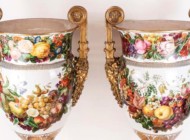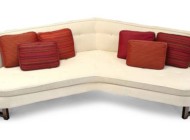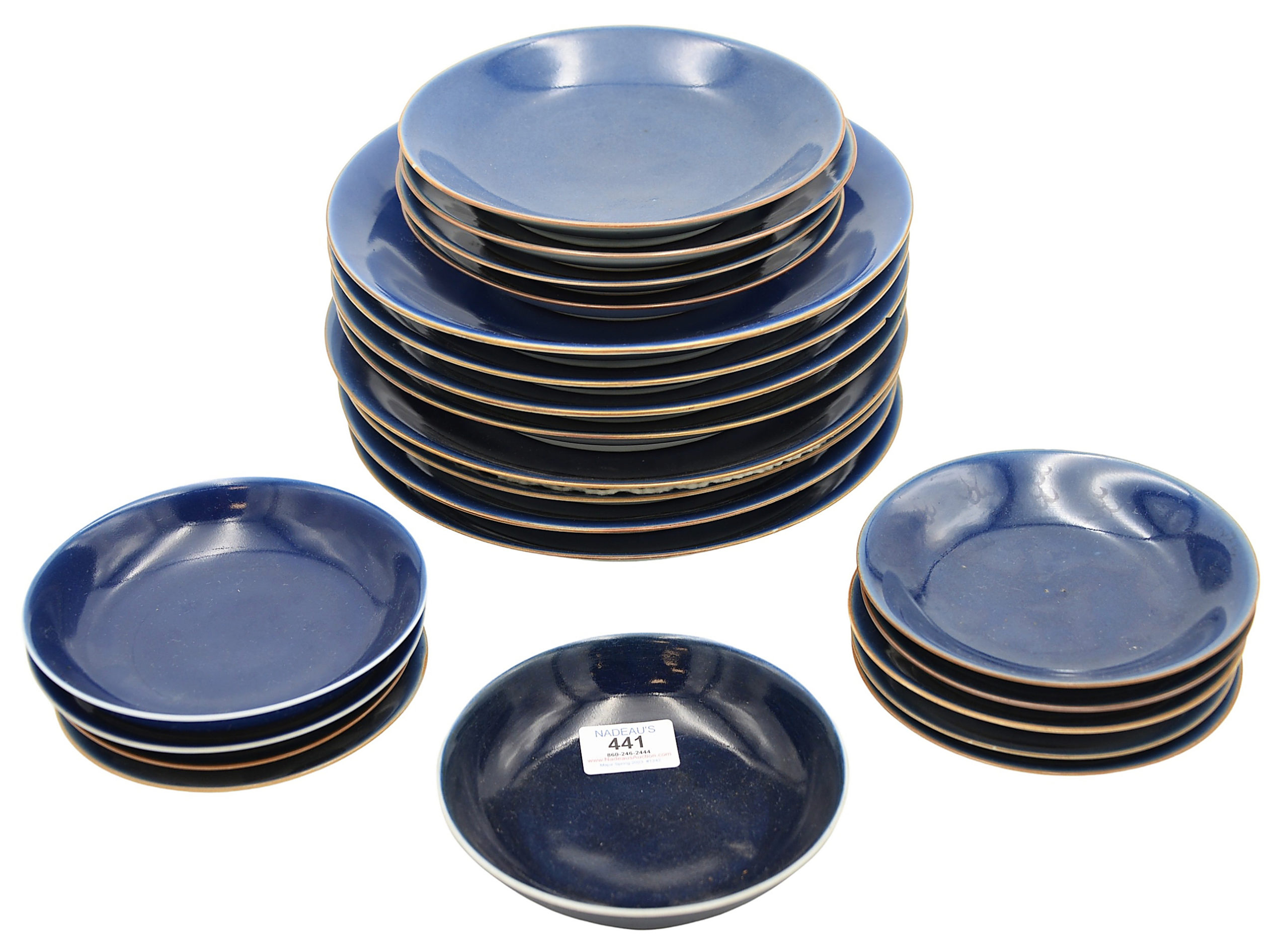
At the top of the sale was a group of 48 Chinese porcelain underglaze blue dinnerware, each deep blue glazed, having white rim and marked with seal mark on bottom, which went out at $114,000, against a $500-$1,000 estimate. The same group of plates from the same home was spread out between three lots, which sold for a total of $163,800.
Review by W.A. Demers, Photos Courtesy Nadeau’s Auction Gallery
WINDSOR, CONN. — When Nadeau’s Auction Gallery presented its spring auction of American antiques, Chinese, Continental and jewelry on May 6, the expected top lot was an archaistic bronze vessel from the Chinese imperial Prince Kung collection, an oviform vessel estimated at $100/200,000. What makes an auction, though, are the surprises, so the leading lot in this sale actually turned out to be a group of 48 Chinese porcelain underglaze blue dinnerware set, each deep blue glazed, having white rim and marked with seal mark on bottom, which went out at $114,000 to a bidder in the room. The estimate was $500-$1,000. The same group of plates from the same home was spread out between three lots, which sold for a total of $163,800, with different buyers for each. The sale totaled $1.298 million, 92 percent sold, according to owner Ed Nadeau, with 156 registered bidders.
The abovementioned archaistic bronze Han-type vessel from the Chinese imperial Prince Kung collection was the second highest grossing lot, going out at $64,000 to the New York City trade. This oviform vessel, 7½ inches tall and with a diameter of 11½ inches, was detailed from top to bottom, featuring tapering sides rising from a flat foot to round shoulders, a contracted neck and flaring rim, and serrated, triangular lappet bands bordering its shoulder and foot. Its body was decorated with a modified Leiwen ground stud with turquoise boss inlays and it exhibited a rich patina.
Provenance accompanying the vessel indicated that it was owned by Chinese Prince Kung (1833-1898), an influential royal and statesman of the Manchu-led Qing dynasty in China. In fact, at a 1913 auction in New York City, it was sold for an amount that today would be equivalent to $47,257. Purchased through an agent named W.W. Seaman, who was buying items on behalf of a private client, it was one of 66 items sold from that collection and, category experts for Nadeau’s matched it to the one featured in the 1913 auction catalog.
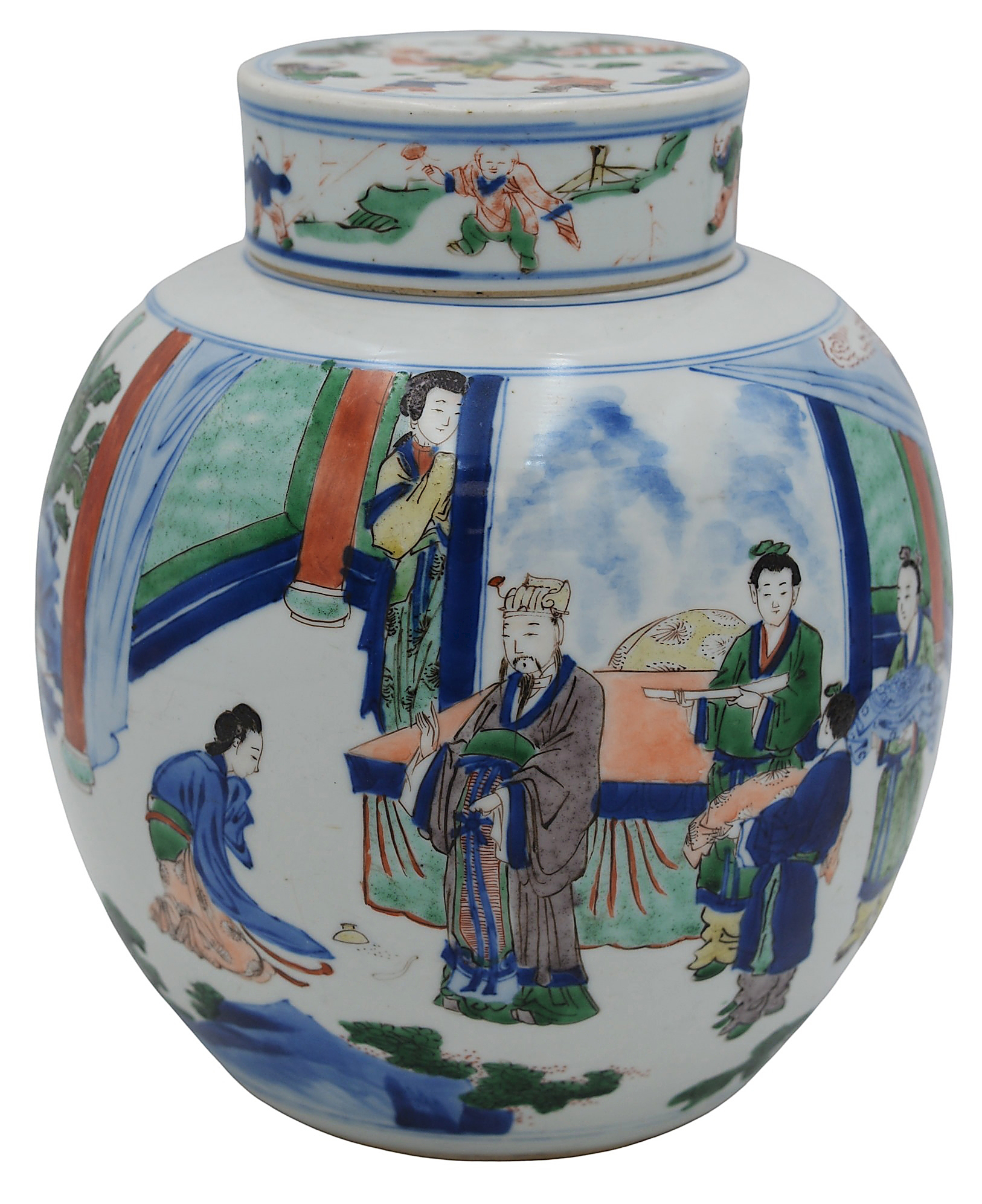
A Chinese doucai/wucai covered jar from the Nineteenth Century featuring a round body decorated with figures in a landscape bore no mark but soared to $43,200, easily surpassing its $1/2,000 estimate.
Research and family information revealed that Seaman’s auction client was likely Homer Pace (American, 1879-1942), founder of Pace College (later Pace University) in 1906 and the college’s first president. The vessel stayed within the Pace family circle since then, passing from Homer Pace to his son Robert Pace upon Homer’s death in 1942, then to Robert’s sister-in-law Mae Neville sometime near the end of World War II, then to Mae’s friend Elinor Murray in 1969 or 1970 where it has resided until the present time.
Fine art across the block included a Charles Willson Peale (1741-1827) “Portrait of Edmund Physick,” oil on copper, which more than tripled its high estimate, selling for $36,000. Signed and described on verso, it was inscribed “peale, pinxit 1796” on the back. Physick (1726-1804), an Englishman, was receiver general and keeper of the great seat of the Province of Pennsylvania. After the Revolution, he remained as attorney and confidential agent for the Penns, charged with handling sales of proprietary lands. Physick and his wife, Abigail Syng, were the parents of the noted physician, Philip Syng Physick. Nadeau’s being the family affair that it is, this painting was hammered down by Gavin Nadeau, Nadeau’s up-and-coming auctioneer who is 12 years old and one of Nadeau’s four grandchildren, all of whom are growing up learning the business. In Nadeau’s New Year’s sale this past January, Gavin spelled the senior Nadeau in the 11-hour sale, taking the podium. This sale was a nine-hour day, “and Gavin was my only relief,” quipped the auctioneer. “He’ll probably want a raise.”
On the modern fine art side, an Aldo Rossi (1931-1997) composite drawing of “Teatro del Mondo & the Porta Biennale,” 1979, ink on paper, realized $17,500, beating its high estimate by a factor of nearly nine.
Antique lighting was notable in this sale. Attributed to Paul Crist Studios, a Tiffany-style leaded glass Wisteria table lamp on tree form base soared to $45,600 against a $2/4,000 estimate. It exhibited rich and brilliant violet cobalt blue hues with opalescent lavender and sky blue mottles. Marked Tiffany & Co on the bottom, the 26-inch-high lamp sported a shade with a diameter of 17¾ inches.
Fetching $24,320, bettering its high estimate by nearly three and a half times, was a Daffodil table lamp, its leaded glass shade marked “Tiffany Studios, New York” over four sockets on a bronze base marked “Tiffany Studios, New York, 1807.” It was 25½ inches high with a 19½-inch shade diameter and came from an Enfield, Conn., estate.
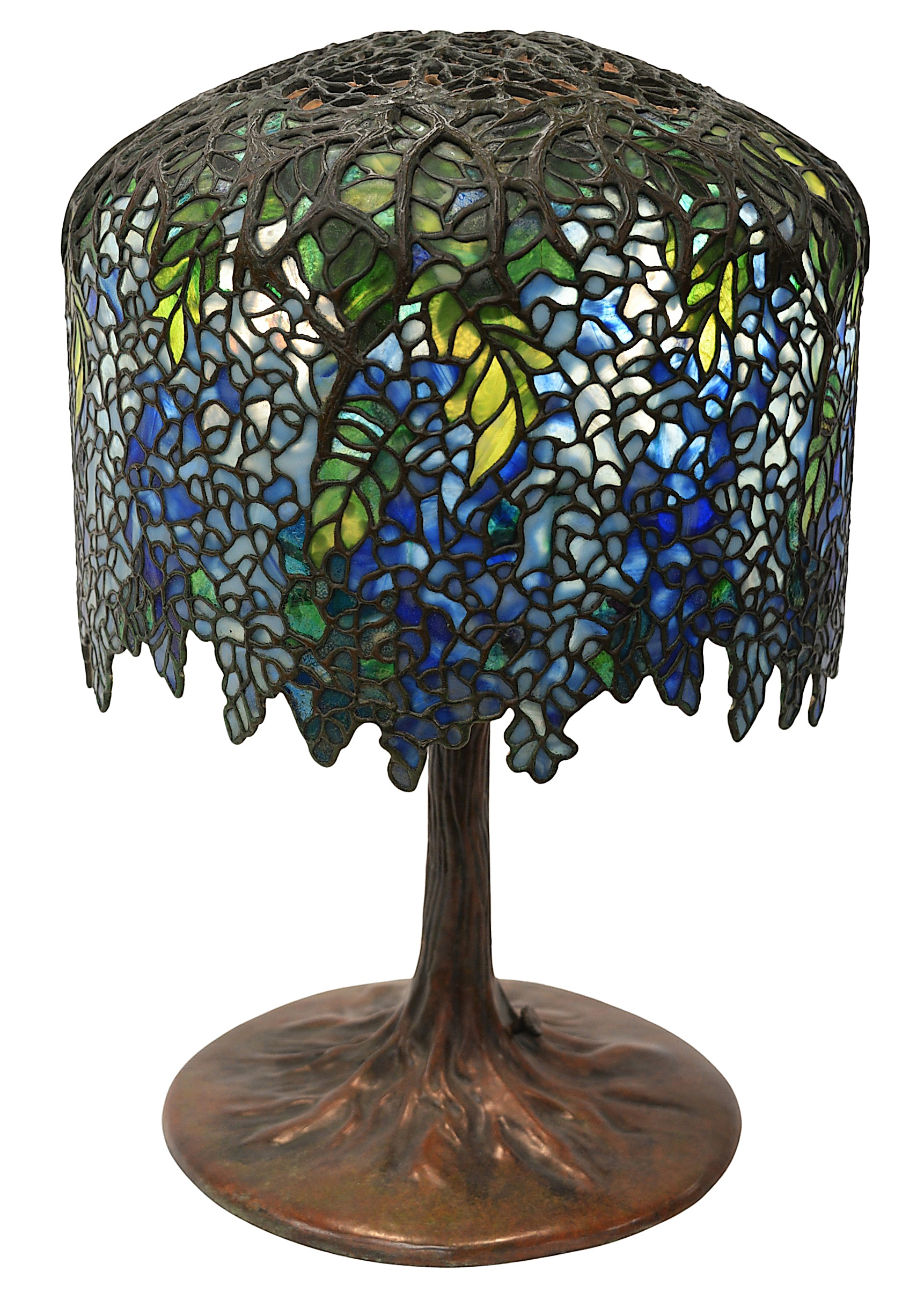
Among notable antique lighting, foremost was this Tiffany-style leaded glass Wisteria table lamp on a tree-form base attributed to Paul Crist Studios. It soared to $45,600 against a $2/4,000 estimate.
There were more Asian high fliers. A Chinese doucai/wucai covered jar from the Nineteenth Century featured a round body decorated with figures in a landscape. At 9½ inches, it bore no mark but soared to $43,200, easily surpassing its $1/2,000 estimate.
A pair of Chinese blue and white covered temple jars, Eighteenth Century, Kangxi period (1644-1722) were decorated in vibrant cobalt blue with cranes and deer delineated on a stark white ground. Unmarked with an old repair to one neck, height 14 inches, the pair more than doubled high estimate to earn $12,300.
Chinese blue and white rouleau vase, Nineteenth Century, its body decorated with floral branches and flying birds, the neck rimmed with multiple jui-head borders, height 19 inches, made $10,800 against an estimate of just $800-$1,200, while a Chinese blue and white porcelain baluster jar, painted with a landscape scene depicting deer and cranes, height 13½ inches, made $9,600.
From a private collection of a Farmington, Conn., estate came a large Leonora Chinese export porcelain armorial charger. It had a centralized coat of arms with enameled birds and an iron red and gilt band border with stylized fruit and flowers. The charger had been part of a service made circa 1720 for Leonora, daughter and heir of Charles Maresco and widow of Thomas Frederick of Westminster. In good condition with minor scratches and knife marks, the 15½-inch diameter piece realized $9,375, more than twice its high estimate.
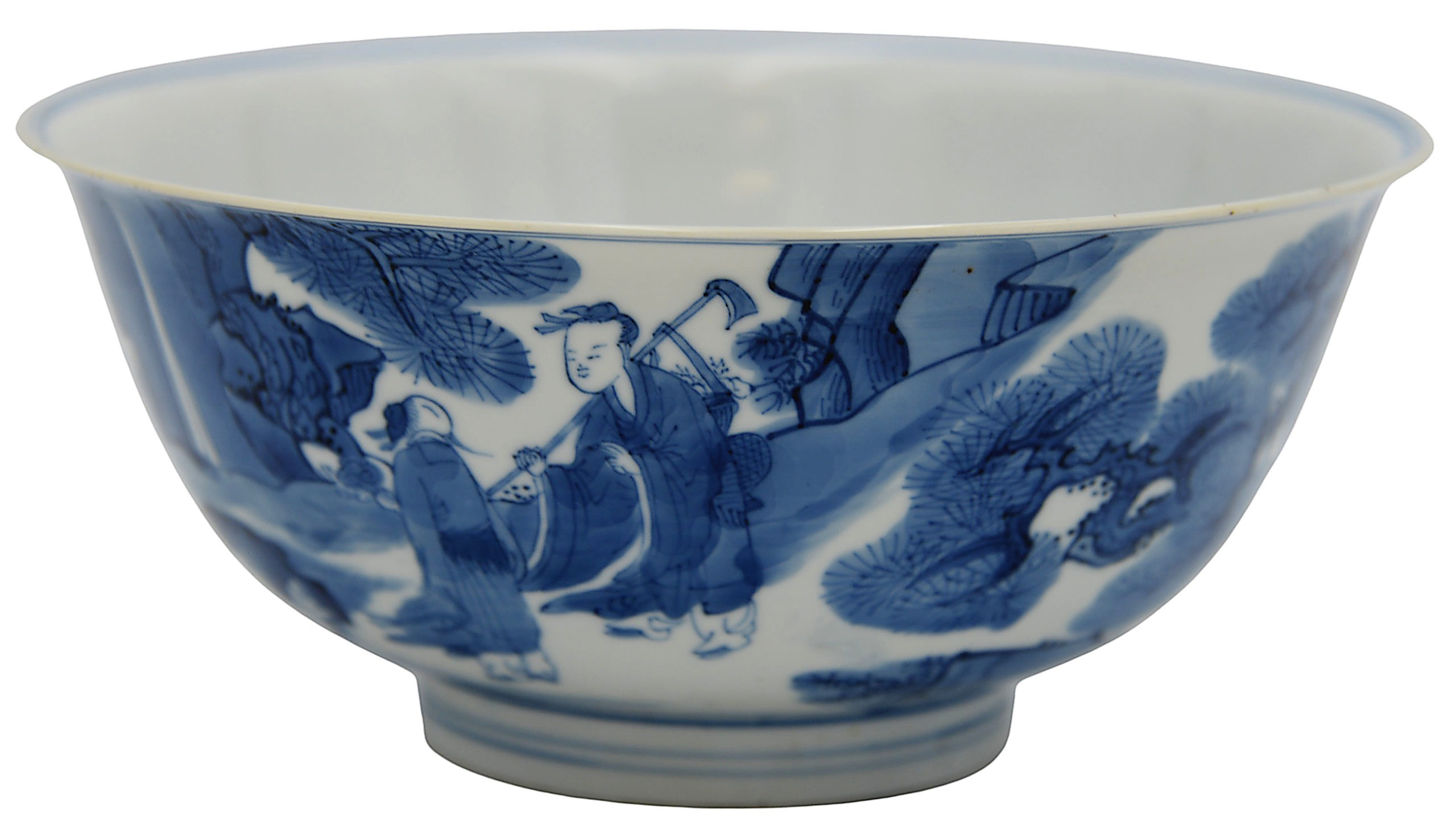
A Chinese blue and white bowl, Nineteenth Century, with a body decorated with figures in a landscape and a base with an apocryphal Ming Chenghua six-character regnal mark, carried an $800- $1,200 estimate but went out at $7,200.
Rounding out the Asian top highlights was a Chinese blue and white bowl, Nineteenth Century, with a body decorated with figures in a landscape and base with an apocryphal Ming Chenghua six-character regnal mark, diameter 8¼ inches. It carried an $800-$1,200 estimate but went out at $7,200.
Notable furniture and decorative arts included a William and Mary walnut and marquetry tall clock that brought $11,875 and a pair of olive wood commodes from the early Eighteenth Century, each measuring 35 by 56 by 26 inches. Detailed with serpentine shaped tops, inlaid wood designs, serpentine drawers with blocked ends, cabriole legs and scrolled feet, the commodes left the gallery at $7,200.
Nadeau’s next sale is slated for June 10 with a modern design focus, plus garden antiques and coins. Prices given include the buyer’s premium as stated by the auction house. For more information, www.nadeausauction.com or 860-246-2444.
















